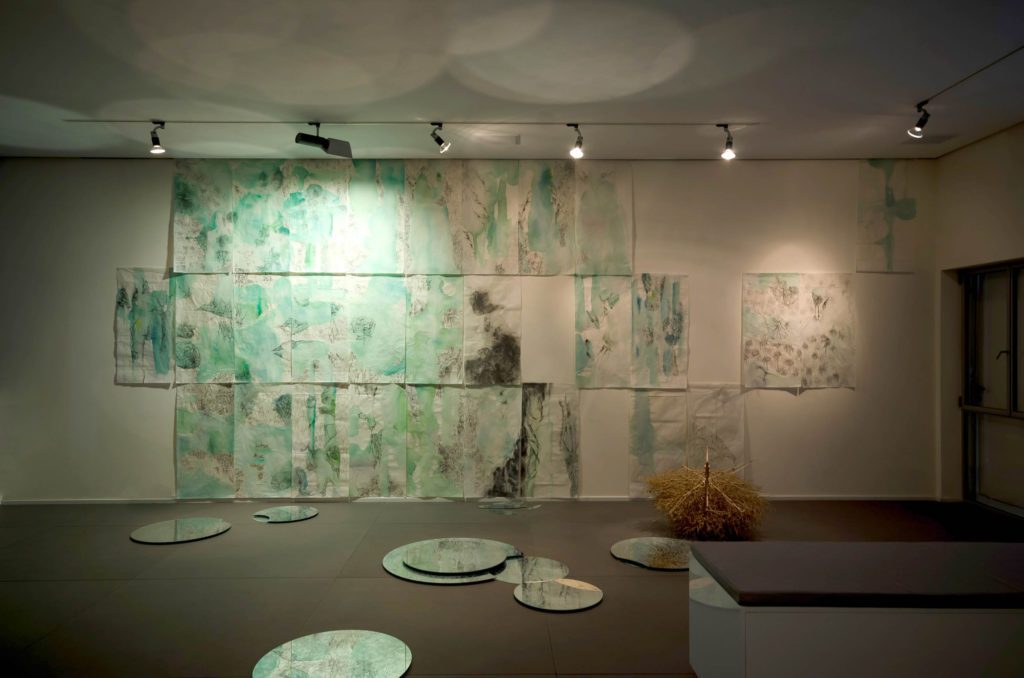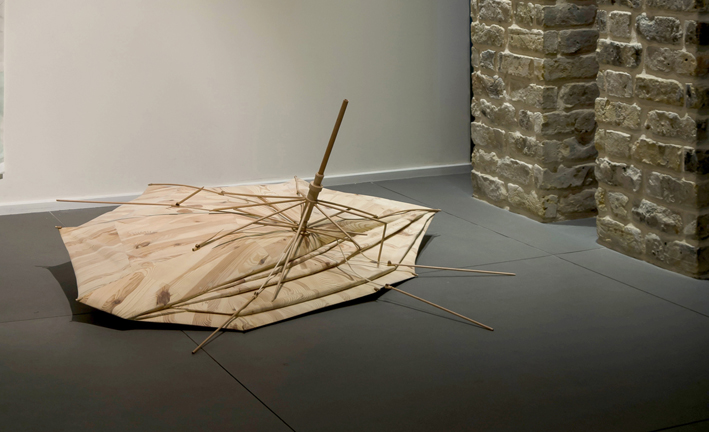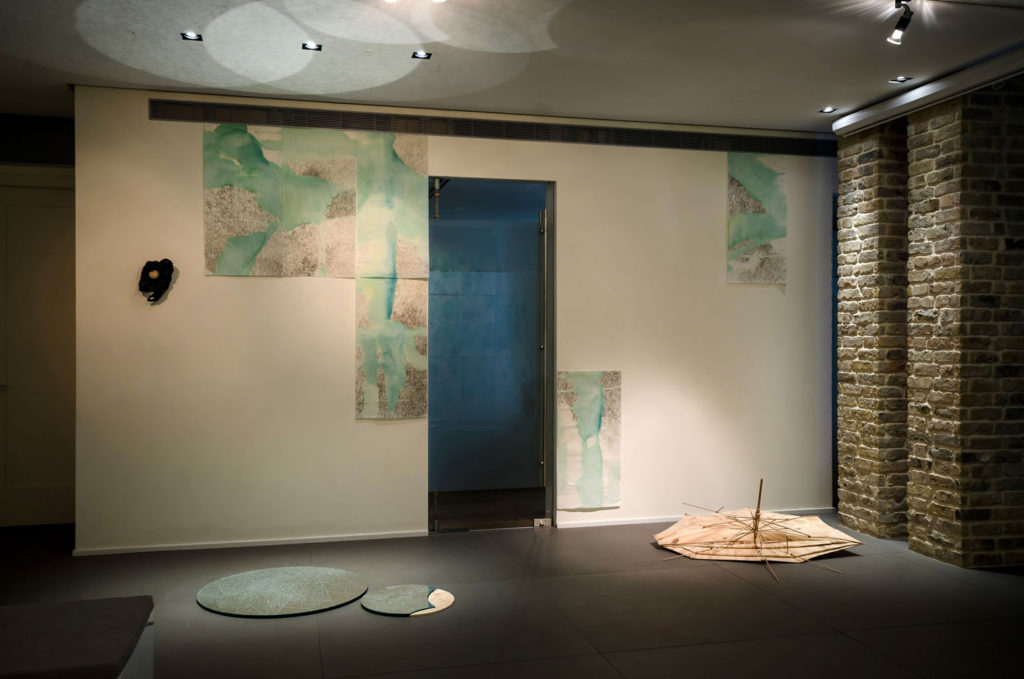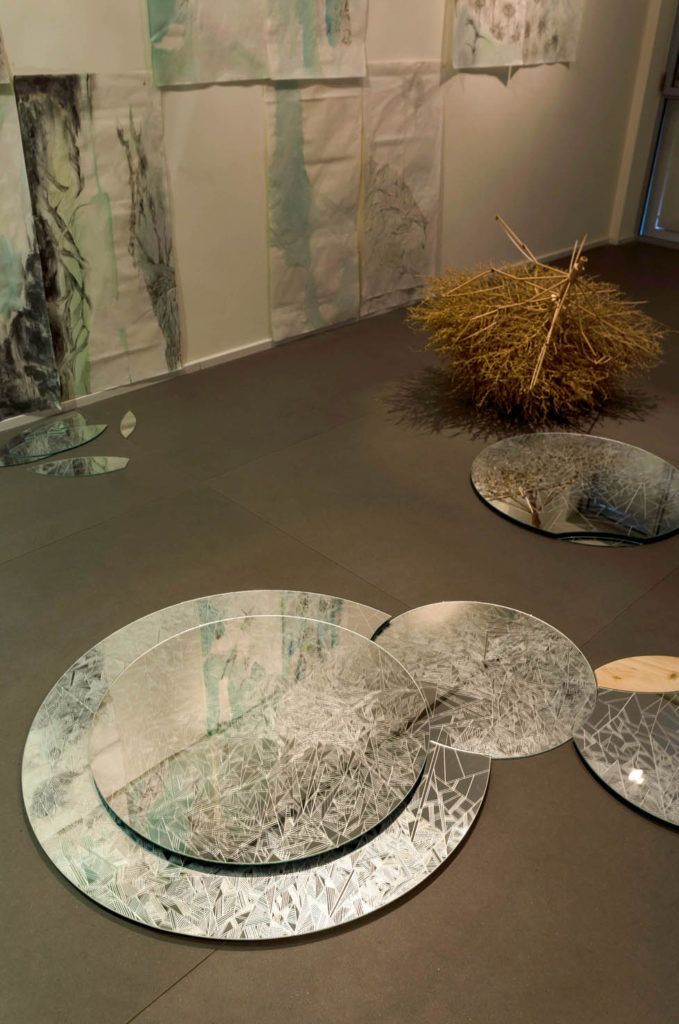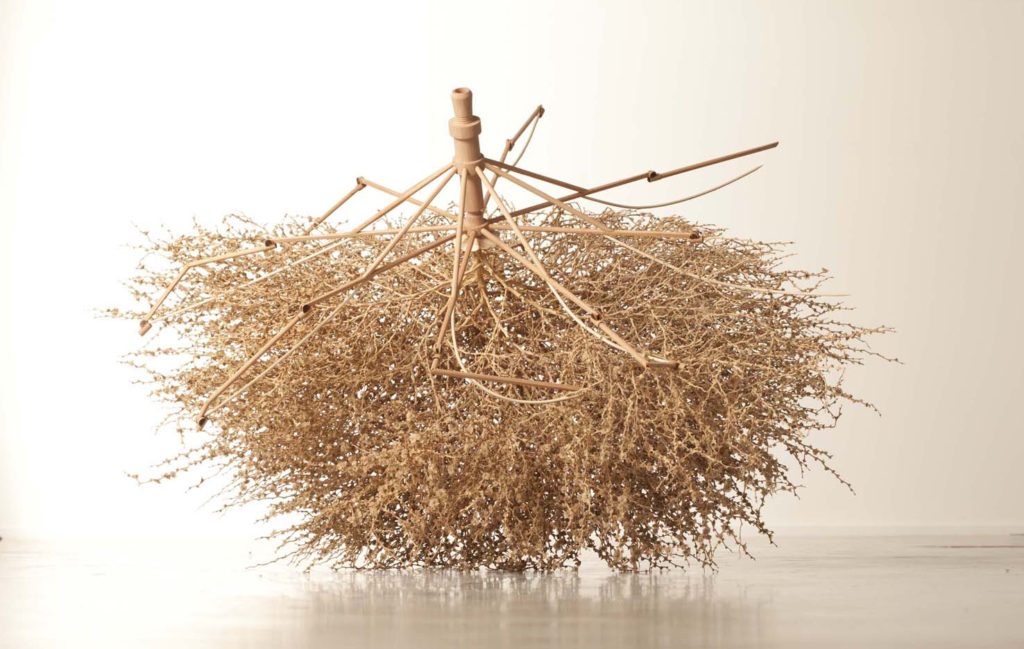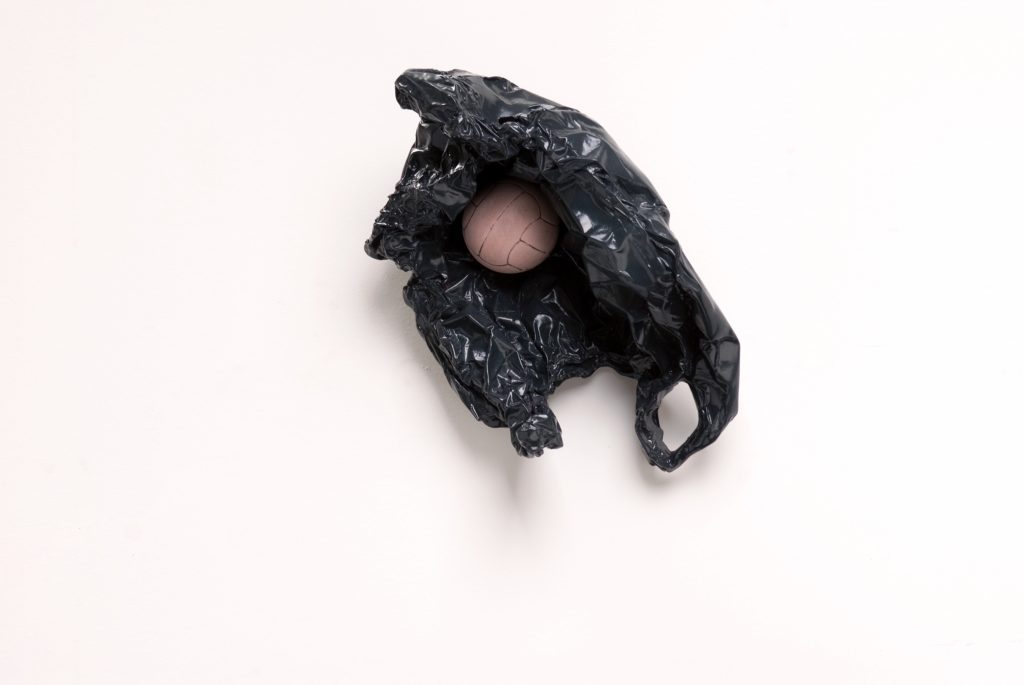Crossover, 2013, collaborative installation by Keren Anavy and Tal Frank host Quayola.
A collaborative installation by Tal Frank, Keren Anavy, Quayola
Curated by Yham Hameiri 5.12.2013 – 9.1.2014
Tal Frank and Keren Anavy have worked and created for more than two years in one studio that is divided in half. They work jointly on long-term projects in which the work process contains a constant trickle that is “melted” into sharing of ideas and working with material, out of which they created the Crossover Installation.
Within the installation, massive chunks of wood are placed, which appear like umbrellas leaning side- ways ‘after the Flood’, that Tal Frank created. They are hand-made by careful sculpturing that simulates cheap, mundane, disposable artificial materials. “Ready-made” is substituted here by traditional wood. Next to them on the floor are mirrors cut like circular ripples of water drops, onto which she created geometric drawing using a technique of diamond etching, which seem like the creation of a fracture or of freezing. The mirrors are cut into polygons, geometric shapes that symbolize three dimensional objects in computer programs, where the net built from them constantly changes. The mirrors reflect depth and tri-dimensionality on the one hand, whereas the etching on them blocks the vision.
The pictorial fragments of Keren Anavy are constructed of scores of drawings on very fine rice paper, “climbing” up the walls, loaded with images of wild, thorny vegetation, symbols of the old, idyllic Land of Israel. The thorn symbol refers to a place that has character and identity, as it were, but just as the graphite drawings flicker and melt into the layers of liquid color patches on the page that is totally soaked, so too does this symbol lose its significance. The transparency of the color against the presence of the line blend together into a quality of drawing that reexamines the possibilities of mass, composition and continuity, as opposed to reaming, reduction, ripping and fragmentation. In this way the drawings speak of a utopian ideology that becomes paper thin and dissolves away.
The video production of Quayola blends into the examination of the tension between original and artificial and imaginary, values, and their dissolving. The installation work emphasizes elements of movement and of time that are formed from the geometrical dismantling of an image. The video image breaks apart and comes together alternately, is reflected and revealed in the space of the Gallery, and on the installation each time upon a different fragment of it. The sound that emerges from it is heard as a digital tone, but even so it suggests a flood or a raging wind.
The installation includes elements that touch on the constancy that apparently permits control and prediction, but actually evades the possibility of forecasting. The familiar idea that the cosmos is a sort of complex, sophisticated machine that operates according to fixed laws, and every outcome stems from a clear, precise reason, and that this reason will always cause the same result, has disappeared from the world. Our scientific, social and historical abilities to predict a particular result has been reduced immeasurably.
Identical causes do not necessarily bring about fixed, predictable results. It’s not that a change has occurred in the actual historical phenomena, but rather that there is no longer any place to speak of progress and development, beginning, middle and end. There is only a continuation of progressively chaotic processes that never repeat themselves, whose direction is unpredictable. History is no longer linear. It apparently occurs without any unified, reasoned purpose. In the era of capitalism a value-less empty space has been formed, bereft of a narrative.
The solution of radical groups, for example, that have not adopted for themselves the democratic, capitalistic concepts, is a narrative solution. This type of solution which exists among clear ideologies is a violent apocalypse. Despite the chaotic nature of this apocalypse, it contains a hard core of meaning. It plants destruction and disperses terror, epidemics, suffering, hunger and wars, all of which are in a narrative framework at the conclusion of which appears an exalted stage of correcting injustices. In this era of loss of narratives, there is no room for groups that attribute narrative significance to history. Capitalism supports this.
Baudrillard, in his book, “The Spirit of Terrorism”, writes about this: “Even the wars, beyond political or economic strategies, are intended first and foremost to normalize savagery and beating in all territories one after the other. The purpose is to reduce any uncooperative area, to conquer and domesticate all the savage expanses, whether geographical or in the dripping universe.”
This joint installation of Keren Anavy and Tal Frank, hosting the Italian artist Quayola, attempts to create a kind of “dripping” Universe like this, in a savage expanse that is questionably narrative, or chaotic, within which these questions flicker in a symbolic way. The result is a sort of “after the flood” picture of symbols and empty peels, a flood that has not left any meaningful territory, but which nevertheless attempts to investigate that significance.
Through this shared dialogue in the Crossover installation, a symbolic environment has been created in the gallery, a kind of subliminal zone that is both ‘natural’ and ‘artificial’, savage and disciplined, whole and broken, moving and frozen, sheltered and breached.
Yham Hameiri, December 2013
2
